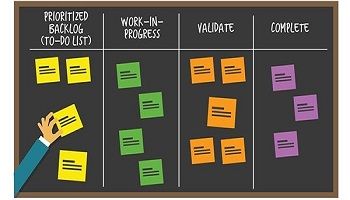Beyond Traditional Metrics: Why Adaptive KPIs are the Future of Project Management
In a recent engagement with a government client, I came across an intriguing yet common conundrum regarding the enforcement of KPIs. Individual projects within their diverse portfolio were flagged ‘red’, signalling they were off course, yet the overall portfolio surprisingly reflected a ‘green’ status, implying smooth operations. This stark inconsistency, compounded by disagreements over the statuses of individual projects, underlined the critical need for a more sophisticated, adaptive approach to KPIs in project management.
Introduction
Conventional KPIs in the realm of project management often bear resemblance to religious texts – unwavering and unchanging, even in the face of shifting project dynamics. This rigid constancy, while providing a sense of stability, may distort perceptions of project performance and overlook potential avenues for improvement. In this article, we delve deeper into these inherent limitations of traditional KPIs and champion a more agile, adaptive approach, one that aligns better with the fluid and ever evolving and unique nature of today’s project landscapes.
Let’s scrutinize the limitations of traditional KPIs. These conventional metrics, while offering a valuable framework, do exhibit certain drawbacks. They possess an inflexible character, condense the complexities of project statuses into a simplistic ‘traffic light’ system, and enforce a generic approach that overlooks the distinctive nuances of individual projects. Consequently, a sudden transition from ‘green’ to ‘amber’ might not truthfully represent a project’s actual condition. Moreover, ignoring key project-specific factors such as the project team’s experience and composition, and other complexities could thwart optimally project outcomes.
Envisioning a New Approach to KPIs
Considering these constraints, we advocate for a more adaptable approach to KPIs. KPIs should serve as flexible signposts, offering nuanced insights and evolving in response to dynamic project conditions. A ‘spectrum’ system could replace the binary ‘traffic light’ system to better encapsulate the subtle gradations between ‘good’ and ‘caution’, thereby enabling a more accurate snapshot of the project’s health and fostering tailored problem-solving and decision-making strategies.
Let’s illustrate this ‘spectrum’ grading: ‘Deep Green’ signifies a project operating ahead of schedule; ‘Light Green’ and ‘Yellow’ mark minor deviations that are manageable with slight adjustments; ‘Orange’ indicates a substantial deviation demanding dedicated intervention; ‘Red’ denotes a severe delay necessitating immediate action. This refined system facilitates proactive responses to project status changes and fosters a culture of continuous improvement.
KPI thresholds should be malleable, adapting to the unique context of each project and evolving in sync with the project’s progress to spur continuous learning and strategic adjustments. Influential variables, such as the project manager’s experience, sponsor involvement, project type, size, duration and team skillset, ought to be incorporated into the KPI thresholds to ensure a more precise and meaningful assessment of project performance.
Finally, KPIs should be viewed as living, evolving mechanisms, mirroring the project’s trajectory. This dynamic perspective fosters a culture of continuous learning, encourages periodic strategy adjustments, and aligns more effectively with the complex and fast-paced realities of modern project landscapes.
Advertisement
[widget id=”custom_html-68″]
Advantages and Challenges of an Adaptive Approach
Adopting an adaptive approach to KPIs unveils several compelling benefits. Primarily, this method fosters a responsive and agile project management environment, enabling teams to adeptly navigate changes and maintain momentum towards their objectives. By embracing flexibility, teams are encouraged to continually learn, refine their strategies, and progressively improve. This learning culture not only nurtures individual and collective growth but also enhances the potential for delivering value and achieving project goals.
However, implementing an adaptive approach is not without challenges. Critics may argue that tailoring KPIs for each project is a burdensome task, especially for organizations handling a vast number of projects. Indeed, creating individual KPIs for each project may seem daunting and resource intensive. However, this concern often underscores a deeper issue of mass governance in project management, where projects are overseen in a bulk, uniform manner, neglecting their unique characteristics.
Counterarguments and Solutions
To address these concerns, it’s important to emphasize that while individualizing KPIs requires upfront effort, the long-term benefits—enhanced accuracy, improved decision-making, and ultimately, successful projects—outweigh the initial investment. It’s about quality over quantity, shifting the focus from managing a large volume of projects to truly understanding and effectively managing each one.
Technology can also play a pivotal role in facilitating this adaptive approach. Advanced project management tools and software can automate the process of defining and adjusting KPIs, making it a less labour-intensive and more streamlined process. Organizations can gradually introduce adaptive KPIs. Starting with pilot projects could allow teams to gain confidence and experience with the approach and help refine the process before wider implementation. This gradual integration can help alleviate concerns and demonstrate the efficacy of adaptive KPIs.
Ultimately, transitioning to an adaptive KPI approach should be a thoughtful, well-planned process, considering the unique needs and capabilities of each organization. By doing so, we can address the legitimate challenges posed, while still harnessing the substantial benefits of this innovative approach.
Conclusion
In our rapidly changing project environment, the steadfast, conventional KPIs may no longer suffice. It is high time we welcome a shift towards an adaptive KPI approach, one that truly echoes the unique fabric of each project, appreciates the diverse shades of project progress, and continuously evolves in tandem with the project’s trajectory. This approach not only amplifies our project management effectiveness but also ensures that our success metrics are as diverse, resilient, and forward-thinking as the projects we orchestrate. By advocating this change, we lay the groundwork for a more realistic, precise, and insightful method of tracking project performance, fostering an environment that champions continuous learning, innovation, and strategic flexibility. With this, we can confidently navigate the complex waters of project management, steering our projects towards their destined success, one adaptive KPI at a time.

